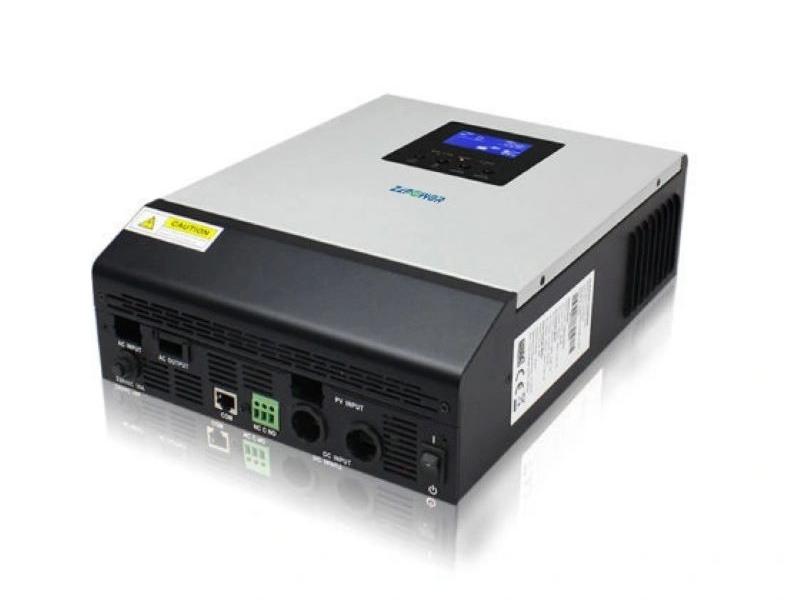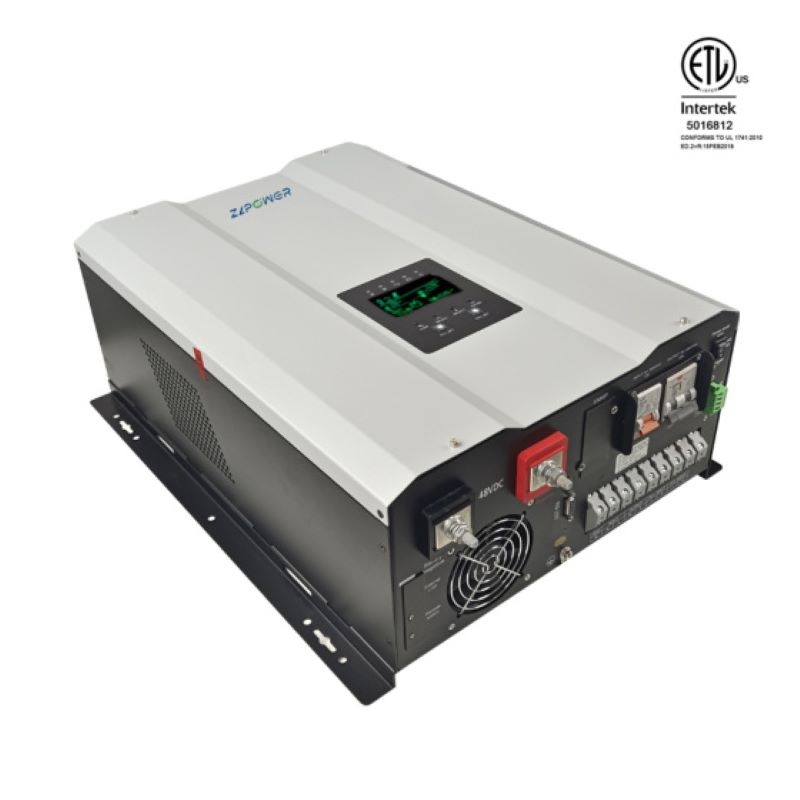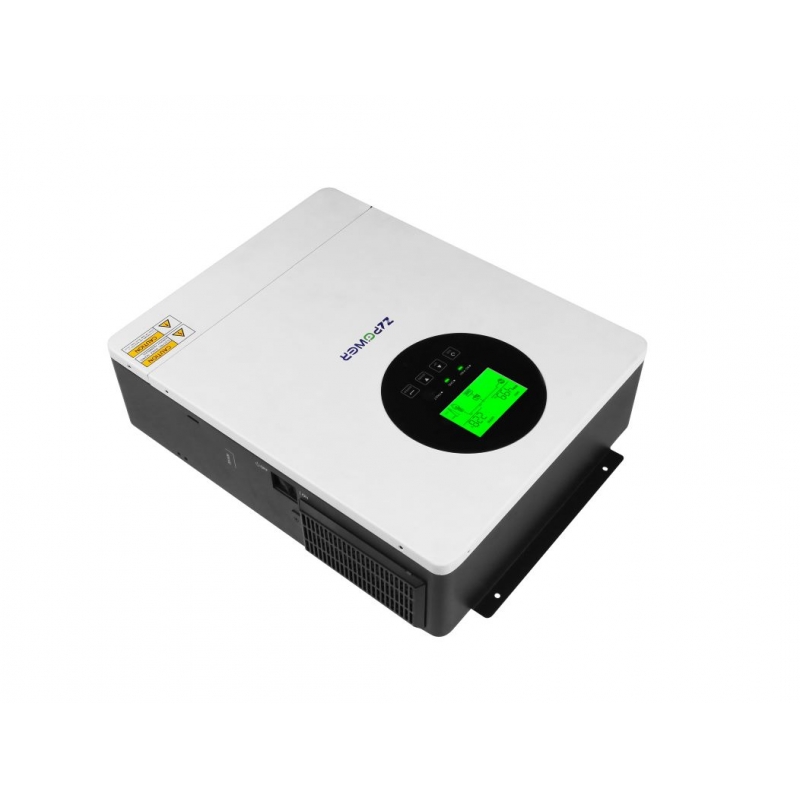

Voltage ups and downs are a big reason your inverter might keep turning on and off. This happens when the power from the grid or solar panels isn’t steady enough for the inverter’s safe range. ZLPOWER inverters, for example, are built with set voltage limits to keep things running smoothly. Take the PVG 3500-24 model—it’s got options for 170-280VAC for computers and 90-280VAC for home appliances. If the voltage jumps outside these ranges, the inverter may shut off briefly to protect itself and your devices.
Unreliable grid power or shaky electricity supply can make this worse. Some inverters, like ZLPOWER’s hybrid models, have fancy MPPT (Maximum Power Point Tracking) solar charge controllers. These help smooth out power from solar panels to reduce the issue.
Overheating is another common culprit for inverter hiccups. Too much heat can come from hot weather or poor airflow around the device. ZLPOWER focuses on smart cooling in its products’ solution. For instance, their GP33 series low-frequency online UPS models use high-tech turbofan systems. These fans whisk away heat to keep things stable.
If an inverter gets too hot, it might switch to a safety mode and turn off until it cools down. Setting it up with plenty of air circulation and keeping it out of direct sun can really help avoid overheating.
Bad wiring or loose connections in your solar setup can lead to constant inverter switching. Faulty connections mess up the flow of power between parts like panels, batteries, and the inverter. This can cause spotty power or even a total system breakdown.
ZLPOWER’s gear comes with safety features to catch problems like reversed wiring. Their RA series IP65 outdoor UPS units, for example, have reverse wiring detection to stop damage from sloppy setups.
Regular check-ups and professional installation are key. They ensure all connections stay tight and work right.
Your inverter needs steady power from solar panels to do its job. Low sunlight from shade—think trees, buildings, or dirt on panels—can cut energy output. This might make the inverter flick off now and then. Hybrid models like PVM Plus 3.5KVA-5.5KVA have battery-free designs. These let them keep working even when sunlight is low.
To get the best performance, clean your panels regularly. Also, place them where nothing blocks the sun.

Super hot or freezing cold weather can throw your inverter off its game. High temperatures make internal parts resist more, which can cause inefficiencies or shutdowns to avoid overheating.
On the flip side, super cold temps can hurt battery performance and energy conversion in off-grid setups. Picking gear that can handle temperature swings is crucial for year-round reliability.
Humidity and moisture can spell trouble for solar inverters. They can rust internal parts or cause short circuits if water sneaks in. ZLPOWER’s RA Series IP65 outdoor UPS units have waterproof designs to fend off rain and mist.
If you’re in a humid area, use weatherproof enclosures. Also, check regularly for any water buildup inside the inverter’s housing.
Dust piling up on solar panels cuts their ability to grab sunlight. This reduces the power your inverter gets to work with. Dust can also sneak into the inverter’s vents or cooling systems, leading to overheating or sluggish performance over time.
ZLPOWER’s hybrid solar inverters indoor come with anti-dust kits for tough environments. Stick to a regular cleaning routine for both panels and inverters to keep things running smoothly and avoid dust-related downtime.
By tackling issues like voltage ups and downs, overheating, bad wiring, and low panel input—plus environmental factors like wild temperatures, humidity, and dust—you can keep your solar inverter quiet. This also helps it last longer.
Software hiccups or firmware problems can make your inverter act up. These issues pop up when the firmware running the inverter is outdated or doesn’t jive with the hardware. ZLPOWER’s PVG series inverters, for example, use advanced MPPT solar charge controllers to manage power flow. But if the firmware has a glitch or isn’t updated right, you might see wonky performance or constant switching.
Keeping firmware up to date helps the inverter run smoothly and stay current with new tech. ZLPOWER’s smart designs cut down on software issues. Still, it’s wise to have a pro handle firmware updates to avoid mix-ups.
Worn-out internal parts are another headache for inverters. Things like capacitors, transformers, or circuit boards can fail over time due to regular use or environmental stress. ZLPOWER’s GP33 series low-frequency online UPS models use tough IGBT inverter tech and static switches for better durability. Even so, parts can wear out.
Routine checks of the inverter are a must. Catching wear early can prevent total breakdowns and save on repairs. ZLPOWER’s modular UPS designs make fixes easier—you can swap out bad parts without messing up the whole system.
Battery issues can really mess with your inverter. Things like low charge cycles, overcharging, or using the wrong batteries can cause frequent switching. ZLPOWER’s lithium batteries last up to 3,500 cycles—five times longer than standard lead-acid ones. This cuts replacement costs and keeps things steady.
Inverters like ZLPOWER’s PVG series can work without a battery during low sunlight. Still, keeping batteries in good shape and matched to your inverter model is critical for top performance.

Staying on top of maintenance is huge for avoiding inverter switching issues. Routine inspections catch problems like loose wires, dust buildup, or worn parts before they turn into big headaches. ZLPOWER’s products have smart safety features. Their RA series IP65 outdoor UPS units, for example, detect reverse wiring to keep bad setups from causing trouble.
Scheduling regular pro check-ups ensures everything works together nicely. Cleaning panels often also boosts energy input by clearing away dirt or debris.
Proper setup is everything for a well-running inverter. Messy installations can lead to voltage issues or overheating, causing constant switching. ZLPOWER’s hybrid solar inverters have user-friendly LCD displays. These let you tweak settings like voltage ranges for your specific needs.
Hiring certified pros for installation follows manufacturer guidelines and cuts risks from bad setups. Pick spots with good airflow to avoid overheating and help the inverter and its parts last longer.
Upgrading your system’s parts ensures they work well together and boosts reliability. Old or mismatched components can stress the inverter, leading to inefficiencies or shutdowns during heavy loads. ZLPOWER’s modular UPS systems let you scale up easily while keeping things solid.
High-quality batteries, like ZLPOWER’s lithium-ion options, improve energy storage and cut downtime from battery problems. Always follow manufacturer advice for upgrades to keep everything compatible.
By fixing technical glitches like software hiccups, part breakdowns, and battery issues—and taking steps like regular upkeep, proper setup, and smart upgrades—you can keep your solar inverter running smoothly. This also cuts down on annoying disruptions.
A: Yup, overheating is a common troublemaker. If your inverter gets too hot—maybe from poor airflow or blazing sunlight—it might switch to a safety mode and turn off until it cools down. Make sure it’s installed in a spot with good ventilation and away from direct sun.
A: Loose or faulty wiring can mess with the power flow between your panels, batteries, and inverter, causing it to flick on and off. Look for signs like inconsistent power or system errors. ZLPOWER inverters often have safety features to catch things like reversed wiring. Getting a pro to check your connections regularly can save you from these headaches.